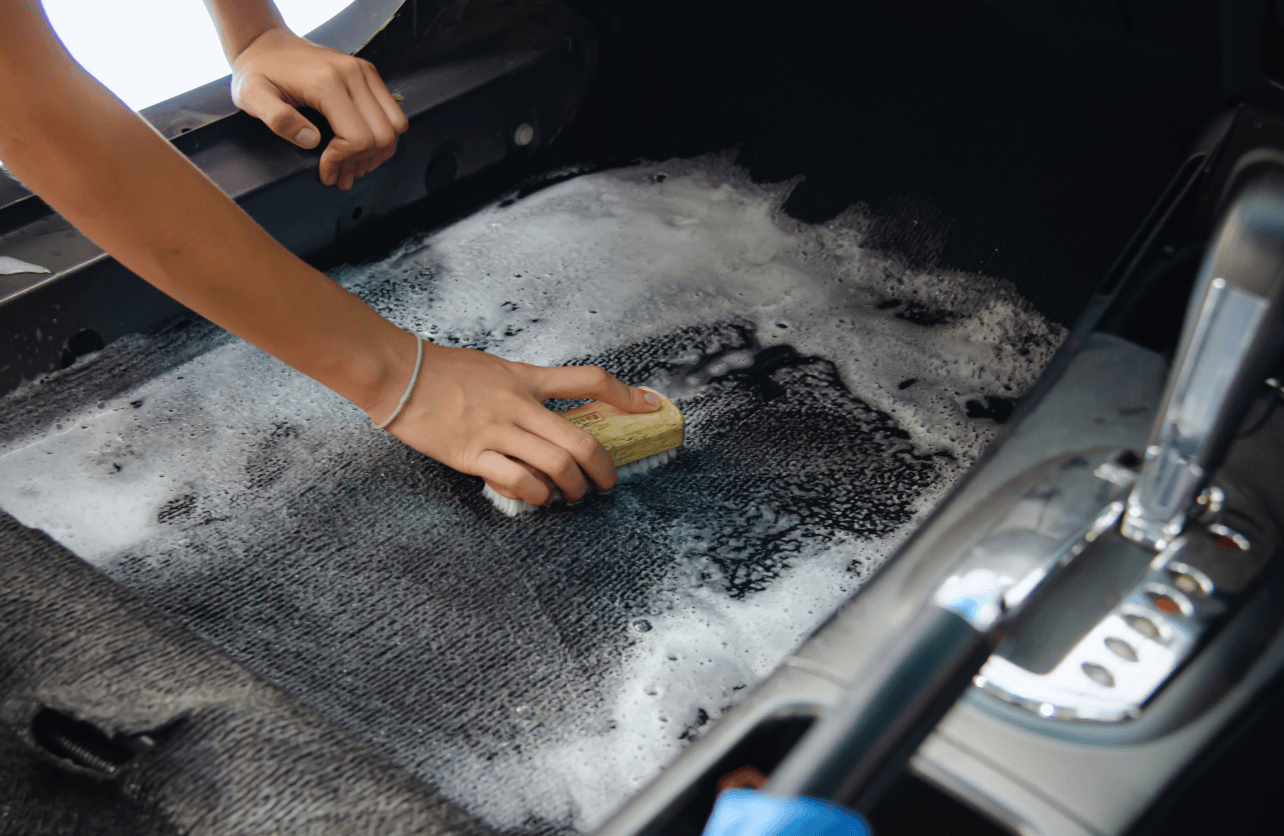Can You Use Dish Soap to Clean Your Car’s Interior?

When it comes to cleaning your car’s interior, many of us turn to household cleaning products for a quick and affordable solution. One common question is whether dish soap, a staple in most kitchens, can safely be used for this purpose. The short answer is yes, but with caution. Dish soap can be effective for certain materials and surfaces, but it’s important to understand its limitations and how to use it properly to avoid causing damage.
The Benefits of Using Dish Soap
Dish soap is an attractive cleaning option because it’s affordable, readily available, and effective at cutting through grease and grime. When diluted properly, it can be a versatile cleaning agent for tackling dirt and stains on specific interior surfaces. However, its strong degreasing properties can also be harsh on certain materials if not used carefully.
Where Dish Soap Works Well
Fabric Upholstery and Carpets
Dish soap can be a helpful tool for cleaning fabric seats and carpets in your car. To use it safely:
- Mix a few drops of dish soap in a bucket of warm water.
- Use a soft cloth or sponge to apply the soapy solution to the stained area, gently scrubbing in circular motions.
- Rinse the area with a clean, damp cloth to remove any soap residue.
- Blot the area dry with a towel to prevent moisture from soaking in and causing odors or mold.
This method is particularly effective for tackling spills and light stains but may not be ideal for deeply embedded dirt or heavy grime.
Plastic and Vinyl Surfaces
Dashboards, center consoles, and door panels made of plastic or vinyl can also be cleaned with a diluted dish soap solution. Use a microfiber cloth dampened with the solution to wipe down these surfaces. Follow up with a dry cloth to remove any excess moisture and prevent streaks. Dish soap is great for removing dust, fingerprints, and light grease from these areas.
Where Dish Soap Should Be Avoided
While dish soap has its uses, it’s not suitable for all materials in your car’s interior.
Leather Seats and Trim
Leather surfaces require special care to maintain their natural oils and prevent cracking. Dish soap, even when diluted, can strip these oils, leaving the leather dry and brittle over time. For leather cleaning, stick to products specifically formulated for automotive leather care. These are designed to clean effectively while nourishing and protecting the material.
Infotainment Screens and Sensitive Electronics
Dish soap can leave streaks or damage the coatings on touchscreens and other delicate electronic components. Use a screen-safe cleaner and a microfiber cloth for these areas instead.
Precautions When Using Dish Soap
If you decide to use dish soap for your car’s interior, keep the following tips in mind:
- Dilution is Key
Dish soap is highly concentrated and needs to be diluted with water before use. A few drops in a bucket of warm water are sufficient for most cleaning tasks. - Test Before You Clean
Always test the solution on a small, inconspicuous area before applying it to a larger surface. This helps ensure that the soap won’t discolor or damage the material. - Remove Residue Thoroughly
After cleaning, wipe down the area with a damp cloth to remove any leftover soap residue. Residue can attract dirt over time, making surfaces appear dirtier more quickly. - Use Soft Cloths and Sponges
Avoid abrasive materials that could scratch or damage surfaces. Microfiber cloths and soft sponges are ideal for applying and removing the soap solution.
Alternatives to Dish Soap
While dish soap is a versatile cleaner, dedicated automotive cleaning products are often a better choice. These products are formulated to handle the unique materials and finishes found in cars, offering superior results without the risk of damage. All-purpose automotive cleaners, leather conditioners, and glass-specific sprays are widely available and can make cleaning more efficient.
When to Seek Professional Help
If your car’s interior has heavy stains, embedded grime, or delicate materials that you’re unsure how to clean, professional detailing services can ensure a thorough and safe cleaning. Professionals have the tools and expertise to handle even the toughest cleaning challenges while preserving your car’s interior.
Final Thoughts
Dish soap can be an effective cleaning solution for certain parts of your car’s interior, like fabric upholstery and plastic surfaces, when used correctly. However, it’s not a one-size-fits-all cleaner, and using it on sensitive materials like leather or infotainment screens can lead to damage. By understanding its limitations and taking proper precautions, you can safely use dish soap for light cleaning tasks.
For a more comprehensive approach or delicate surfaces, investing in automotive-specific cleaning products is the best way to protect and maintain your car’s interior.